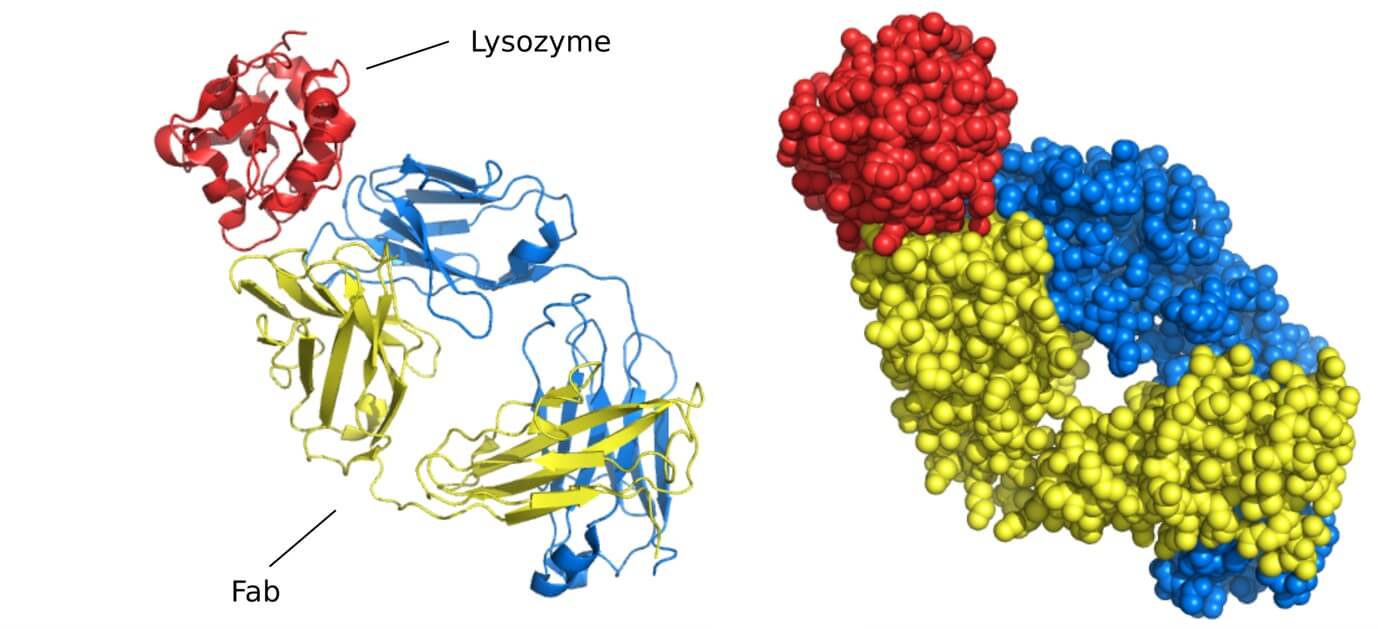Crystallization of Antibody-Antigen Complexes
Antibodies are proteins that bind tightly and specifically to antigens to block their activity or to mark them for destruction. They are essential recognition elements of the immune system, and are increasingly used as drugs. Information on the three-dimensional structure of antibody–antigen complexes is essential for antibody design/engineering and for understanding their mechanism of action. X-ray crystallography provides the most accurate and detailed data on protein structure and interactions. For the past few decades, many antibodies have been successfully crystallized, but the number of structures determined in complex with their antigens is still relatively small. Although an increasing number of antibody-antigen complex structures have been deposited in the Protein Data Bank (PDB) in recent years, co-crystallization of such complexes remains a major obstacle.
Creative Biostructure takes advantage of the high-throughput protein crystallization platform for the study of various antibody-antigen complexes. With years of experience in protein crystallization, our scientists have developed optimized methods to improve the success rate of co-crystallizing antibody-antigen complexes, taking advantage of the typical high affinity between antibody and its antigen. These methods have been mainly directed towards the Fab-antigen complex. The reason for choosing Fab fragments is due to the ease of determining Fab structures and the difficulties in the crystallization of whole antibodies, which have more flexible regions and therefore large conformational heterogeneity. These Fabs are recombinantly expressed or prepared by papain cleavage of the corresponding mAbs. The procedures for crystallizing Fab-antigen complexes are generally identical to those for the co-crystallization of other types of proteins complexed with their ligands. Our procedures generally include the following steps:
(1) Fast screening with commercial kits
(2) Selection of hits and preparation of the seed stock
(3) Microseed matrix screening (MMS) in a subset of the initial screen
(4) Final optimization of conditions if needed
In our experience, each complex behaves differently in the crystallization process and displays its own tendency to nucleate. Both self-seeding and cross-seeding proved to be effective in producing diffraction-quality crystals. This is due to the high sequence identity between different Fabs, which offer a great opportunity for the growth of crystals to occur in new conditions that are different from those for nucleation. Indeed, we found in many cases that the application of the MMS method increased the hit rate and consequently reduced the number of experiments and the amount of protein needed.
Apart from the crystallization itself, Creative Biostructure has extensive experience in protein production and preparation. We have optimized Fab preparation and purification methods for different antibody sources, as well as antibody-antigen complex preparation protocols, both contribute to obtaining well-diffracting crystals.
 Figure 1. Structure of Fab fragment bound to lysozyme
Figure 1. Structure of Fab fragment bound to lysozyme
Our efficient protocols make it an easy task to purify antibody-antigen complexes to homogeneity. The extensive optimization of crystallization conditions using automated robotics further increases hit rates. The determined structures allow for the identification of antigen binding sites (epitope mapping), and conformational changes induced by binding. The Fab-mediated crystallization process itself is also an efficient way to facilitate membrane protein crystallization. Creative Biostructure works closely with our customers to provide tailored strategies for the structure determination of antibody-antigen complexes of interest.
Please feel free to contact us for a detailed quote.
Ordering Process
References
- Obmolova G, et al. (2010) “Promoting crystallization of antibody-antigen complexes via microseed matrix screening”. Acta Crystallogr D Biol Crystallogr 66(Pt 8):927–933.
- Enrico A, et al. (1993) “Crystallization of antibodies and antibody-antigen Complexes”. ImmunoMethods 3(3): 164–179.

